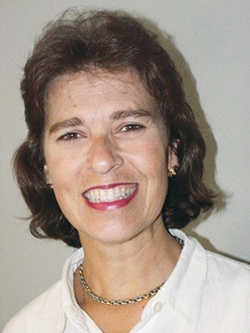Traffic is a Good Thing if it Leads to Public Transit, Trail Improvements (Opinion)
by April 29, 2013 12:00 am 88 views

I didn’t know until I visited with Joel Gardner, Ozark Regional Transit director, I had been a rider of “need” and then a rider of “choice” during a previous career stop in Dallas.
When I first moved from Northwest Arkansas to Texas in 1982, I worked in downtown Dallas. Stop-and-go traffic, congested expressways and paying for parking were daily nuisances, and after getting rear-ended and sending my car for repairs, I started taking the bus out of need.
But after my car repair was complete, I continued taking the bus. That was a matter of choice.
For those of us in Northwest Arkansas to have such a choice, Gardner first wants to demonstrate ORT is a good steward of money. He wants to enforce time schedules that establish dependability and will grow ridership, as well as consolidate routes in order to effectively serve the most people.
Gardner also wants to complement University of Arkansas and Northwest Arkansas Community College routes, providing broader coverage for students and non-students alike. It’s not common knowledge, for example, the Razorback transit system is free to the general public because it is federally funded.
The UA has 25 transit buses, as well as six paratransit vans that offer handicap accessibility. According to UA transit system officals Gary Smith and Adam Waddell, ridership in 2012 was 1.98 million, up 17.6 percent from the previous year.
Even so, due to the UA’s continuous efforts, the average cost of transit per passenger in 2010 was $1.24. That’s impressive when compared to the national average of $3.25 per passenger.
That type of efficiency also will be needed as new multifamily developments like The Domain at Fayetteville and The Vue figure to add to ridership totals. National Association of Realtors studies, after all, show real estate developments near public transit stops are more desirable.
Another factor worth remembering as those at both the ORT and UA continue to tackle new challenges is Northwest Arkansas’ status, as designated by the U.S. Secretary of Transportation, as a Transportation Management Area due to our urbanized population of more than 200,000. That designation was made during the summer of 2012, according to Paul Justus of the Northwest Arkansas Regional Planning Commission.
It is important because while a TMA enjoys certain benefits, it also incurs additional requirements beyond those of smaller urbanized areas. Transportation plans within a TMA, for example, must be based on a continuing and comprehensive process carried out in cooperation with the state government and transit operators. The process also must include a Congestion Management System, and the planning commission currently is implementing a CMS study.
As we know, thanks to data from the U.S. Census Bureau and the Northwest Arkansas Council, we have congestion. The census bureau said between 2007 and 2011, almost 54 percent of Benton and Washington county drivers age 16 and older who did not work at home had a drive-time commute of between 15 and 34 minutes.
Then came the council’s October 2012 traffic study. It said congestion adds $103 million in expenses annually in gasoline costs, vehicle repairs and time delays.
Those kinds of numbers are why trail systems also play a part in reducing congestion. According to Fayetteville Parks and Trails coordinator Matt Mihalevich, usage at parts of the city’s 22-mile system has increased by as much as 74.5 percent since 2009, and not all of that is recreational.
Those usage numbers could continue to climb as the city implements plans to add and improve more than 20 miles of sidewalks in the next two years. That should only improve Fayetteville’s walkability score, as rated by a Certified Commercial Investment Members study.
The studies show what goods and services are within walking distance, with a perfect score being 100. Downtown Fayetteville currently has a score of 80, while Springdale scores 71.
The Northwest Arkansas Razorback Regional Greenway has the potential to boost the scores of all of our major cities. The 33-mile trail will provide connections to adjacent communities, and also could be a boon to nearby property values.
So, the next time you’re stuck in traffic that makes you feel like you’re in Dallas, remember how important it is that we continue to improve our public transportation and trail systems. As long as we do, Northwest Arkansas is on its way.
Jacci Perry is a commercial real estate agent and Certified Commercial Investment Member at Crye-Leike Realtors in Fayetteville. She can be reached at 479-841-1900.
